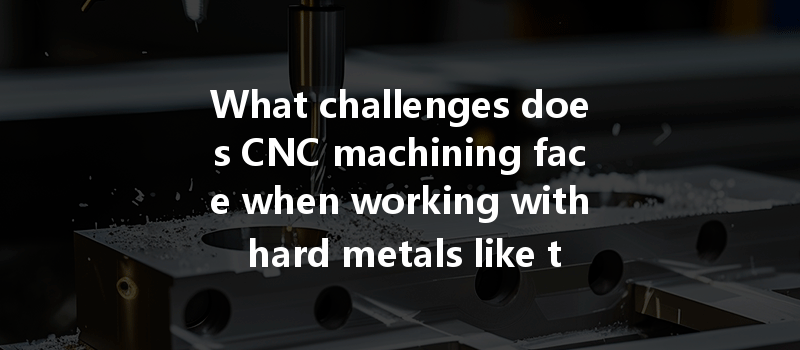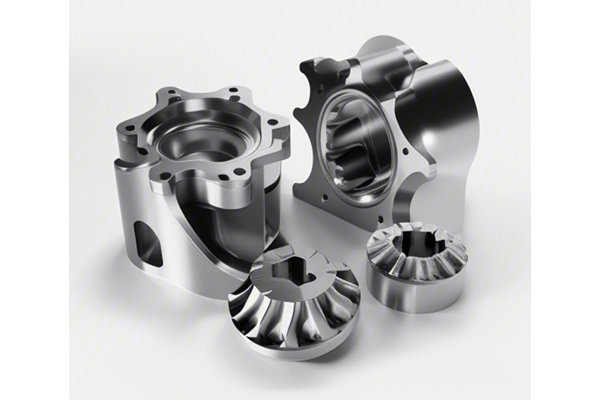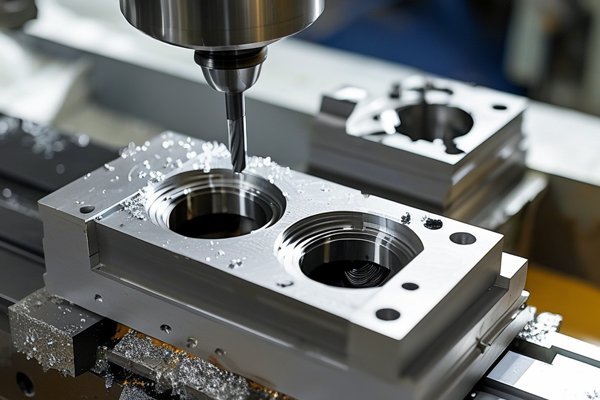Did you know that the demand for precision components made from hard metals like titanium and specialized steel alloys is predicted to grow by over 20% in the next five years? This surge is not only driven by the aerospace, automotive, and medical sectors but also by emerging technologies requiring high-performance materials. However, working with hard metals presents a unique set of challenges in CNC (Computer Numerical Control) machining that can impact production efficiency, quality, and overall costs.
In this comprehensive blog, we’ll delve into the various challenges CNC machining faces when dealing with hard metals and explore effective solutions to overcome these barriers. We’ll touch on several essential aspects, including material properties, cutting tool selection, machining strategies, and the importance of machine settings. By the end, you’ll have a clear understanding of how to navigate the complexities of CNC machining in hard materials, aiming for improved performance and reduced waste.
Understanding Hard Metals and Their Impact on CNC Machining
Hard metals, such as titanium, tool steel, and high-strength alloys, possess certain properties that make them particularly challenging to machine:
Hard metals resist deformation, meaning they can be difficult to cut. This high hardness often results in excessive tool wear, leading to increased downtime for tool changes and maintenance.
While hardness and toughness seem similar, they are distinct. Tough materials can withstand impact without fracturing, which can create challenges in achieving desired surface finishes in machining.
The heat generated during machining hard metals can alter their structural integrity. Some metals can experience thermal distortion, leading to warping and dimensional inaccuracies.
When machining hard metals, the chip formation is often irregular. This can lead to build-up on cutting edges and inconsistent surface finishes, complicating post-processing steps.
These properties can contribute to inefficiencies, increased wear on tools, poor surface finishes, and extended machining times. But fear not; we can overcome these challenges with effective strategies.
Solutions to CNC Machining Challenges in Hard Metals
The first step in addressing the challenges of machining hard metals is selecting the right material for the job. Material grades can vary widely in their machinability. Here we have some key considerations:
a. Opt for Machinable Grades
When possible, choose materials that are specifically engineered for machinability. For instance, certain grades of titanium come with added alloying elements that enhance chip formation and reduce tool wear.
b. Pre-Heat Treatment
For metals like tool steel, a smart approach involves heat treatment prior to machining. Aaganizing the material to achieve a tempered state can result in enhanced machinability.
Effective tool selection is paramount when working with hard metals. The tool must withstand the high stresses and temperatures incurred during machining. Here are a few guidelines:
a. Carbide Tools
Carbide cutting tools are often favored for high-strength materials due to their excellent hardness and wear resistance.
b. Coating Options
Consider using coated tools (like TiAlN or TiN) to extend tool life. These coatings offer thermal resistance and reduce friction, while also allowing for a higher cutting speed.
c. Tool Geometry
The geometry of the tool is just as important. Tools with sharper cutting edges can penetrate harder materials more efficiently. Additionally, tools with large relief angles help to minimize friction.
The path you choose for machining can make a significant difference in efficiency and effectiveness. Below are several strategies to consider:

a. Speeds and Feeds
Understanding optimal cutting speeds and feed rates is essential. Slower speeds may be required for harder metals to prevent excessive wear, while too high a feed rate can lead to tool damage. Utilize machining calculators to determine the best parameters.
b. Use of Cooling and Lubricants
Using high-quality cutting fluids is crucial. For hard metals, advanced coolants can serve dual purposes: they reduce heat generated during cutting and help flush away chips, preventing them from accumulating at the cutting edge.
c. Power and Torque Optimization
Ensure that your CNC machine is adequately matched to the hardness of the material being machined. Machines that provide sufficient torque at low speeds can handle the demands of hard metal without compromising performance.
Incorporating advanced techniques can further enhance the machining of hard metals:
a. High-Speed Machining (HSM)
Using HSM techniques can reduce cutting forces and minimize wear on the tools. This approach requires precise machine control and sophisticated software.
b. Electrical Discharge Machining (EDM)
For intricate designs, EDM can be invaluable. This technique uses electrical discharges to erode material, making it ideal for complex geometries in hard metals.
c. Laser and Water Jet Cutting
These methods can serve as alternatives to traditional CNC machining for surface processing of hard metals. Laser and water-jets allow for intricate designs and can minimize thermal effects.
Preventative maintenance can play a key role in machining effectiveness. Ensure regular checks and calibrations on machines and tools, focusing particularly on:
a. Tool Life Management
Regularly monitor tool wear to replace them proactively, avoiding poor finish quality.
b. Machine Calibration
Ensure that CNC machines undergo routine calibrations for precision. Uncalibrated machines can lead to dimensional inaccuracies.
c. Quality Control Procedures
Implement continuous monitoring throughout the machining process, utilizing sensors or vision systems to catch errors early.
The Importance of CNC Machining Hard Metals
The challenges that arise when CNC machining hard metals are far from trivial. Ignoring these hurdles can lead to significant losses in productivity, increased costs, and dissatisfaction among clients. However, with the right strategies and best practices, manufacturers can turn these challenges into opportunities.
By enhancing the efficiency of CNC machining processes, manufacturers can garner long-term benefits that extend beyond immediate production requirements, positively impacting overall business success.
In this extensive exploration of CNC machining hard metals, we’ve outlined the crucial challenges and innovative solutions that can enable manufacturers to enhance their machining capabilities. From careful material selection to employing advanced strategies and maintenance protocols, the path to optimized machining in hard metals involves a multi-faceted approach.
Rethinking how you adapt to these challenges is vital, especially as industries continue to demand ever more precise components. The importance of addressing these issues cannot be overstated; failing to adapt may leave your business vulnerable in a competitive market.
As you take these insights into your operations, remember that staying ahead in the CNC machining landscape is an ongoing process. The right strategies today will pave the way for success in tomorrow’s high-performance manufacturing environments.






